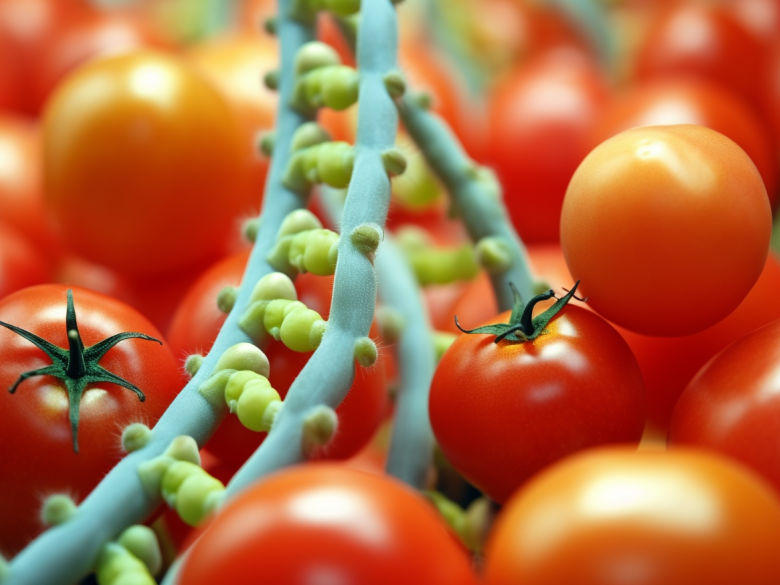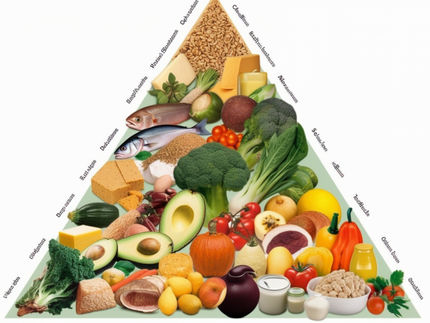It’s time to rethink attitudes toward GMOs
Advertisement
When the first genetically modified crops were released in the 90s, consumers were fearful of a technology they didn’t understand, and these fears were fueled by organisations giving false information about the effects of GMOs. Now, more than 30 years later, we are faced with real challenges of climate change, food insecurity and nutrition inequality for an ever-growing population. Genetically modified crops and other biotechnologies can help provide solutions for these challenges.

Computer generated picture
Unfortunately, even though we have examples of biotechnological advances, including lab-grown milk and gene-edited vegetables for better nutrition and shelf-life, consumer opinions are still stuck in the past. It’s time to help consumers see the benefits of biotechnology and embrace it to help solve our global food and nutrition challenges.
What are genetically modified organisms?
Genetic modification involves transferring a gene from one kind of organism to another to replicate the desired characteristic in the new organism and thus alter its genetic makeup.
But other technologies like gene editing are less controversial. Gene editing technology targets specific genes within an organism to promote certain characteristics or curb others. Gene-editing works with the existing genes and does not introduce DNA from another organism. The CRISPR technique has enabled the proliferation of products in development using gene editing technology.
Regulatory changes are finally catching up with technological advances
Governments are now acknowledging the benefits of biotechnology (GM, gene editing and others) and amending regulations. The next step will be to communicate these benefits to consumers.
In September 2021, the UK Department for Environmental Food Rural Affairs released the outcome of their consultation on genetic technology regulation. The press release explained that products which are made with genetic technologies (including gene editing) that could otherwise have been achieved by traditional breeding will now be considered in a different way to GMO products.
The document also outlined that the government is now embarking on a process to update their existing GM regulations to meet with the advances in technology. The UK government, along with the EU, has acknowledged that its current legislation on gene-edited organisms is no longer fit for purpose and needs updating.
Existing product labelling is driving a search for the non-existent
To inform consumers, countries like the UK, USA and Australia have regulations that require labelling the presence of genetically modified ingredients in food. As a result of these labelling requirements, supermarkets in Australia and the US began insisting their suppliers prove their products did not contain novel genetic material. The unintended consequence of labelling foods as non-GMO is that it can create a feeling that these foods have an equivalent that is genetically modified. In reality, there are very few foods grown globally for human consumption that are currently genetically modified.
Link technology to tangible benefits for consumers
The original Bt soy and corn generated a lot of fear among the public because companies were seen to be profiting at the expense of consumer concerns about environmental biodiversity and human health. There were also reports of unethical treatment of farmers. As there seemed more risk than direct benefit to individual consumers, public sentiment was set, and people’s opinions became difficult to change.
For brands, the challenge is to address some of these concerns by being openly transparent with their processes and focusing on how GMO foods provide clear benefits for consumers:
- Keeping foods fresher for longer – In the US, 36% of consumers are interested in genetically modified fruit to stay fresher for longer, so there is lesser food waste.
- Providing superior nutrition – About 32% of consumers in the UK are willing to buy genetically modified produce engineered to be more nutritious than standard produce.
- Delivering more sustainable products – In the US, 16% of consumers said they would eat lab-produced meat if it tasted the same as meat from an animal.
The biggest way to highlight the benefits of biotechnology for consumers is to explain that without this technology, they could lose their favourite foods. In the 1990s, for example, scientists used genetic modification to create papaya plants that were resistant to the papaya ringspot virus. The virus had affected almost all the papaya crops in Hawaii and had reduced their production by almost 50%.
Once scientists had completed the testing of the GM papaya, they worked with a public-private partnership to make the seeds available to farmers. A decade after the trial, 90% of all papaya planted in Hawaii was the GM variety.
There is no doubt this innovation saved the commercial viability of the papaya industry and also preserved the papaya for consumers to enjoy. Without it, natural selection could have resulted in the extinction of the papaya.
Harness Gen Zs to change the rhetoric on GMO
Gen Zs are less motivated to select food based on the attribute of being GMO-free. In Canada, Mintel research shows that only 21% of 18-25-year-olds said GMO-free was important when buying food compared to 34% for 45-54-year-olds. Older consumers may be tainted by the history of biotechnology in food. Still, gen Z can deliver a fresh message and have the ability to change the rhetoric for the future.
- Gen Zs are change makers – Gen Zs (those born between 2012-1997) are more likely than older generations to talk about social issues with their friends, sign petitions and join activist groups.
- Gen Zs are optimistic – 68% of Canadians aged 18-25-year-olds describe themselves as optimistic.
- Gen Zs want social equity from brands – 61% of consumers aged 18-25 say brands should be involved with campaigning for social equity.
Younger consumers see GMOs in a more practical light because they are unaware of GM’s history and are familiar with the role of technology in so many aspects of their lives. As a result, Gen Z would be a good group to challenge consumer scepticism on other useful biotechnologies to improve our food system. They are also well equipped to help educate others about the pitfalls of GMO-free advertising with a more balanced opinion.
What Mintel thinks
The consumer backlash that GMO foods experienced when first released is a difficult sentiment to change. But if we are to solve the bigger problems of world hunger and food insecurity, governments, companies, and retailers need to play a role in resetting the rhetoric around biotechnology in food. Products that use these newer technologies can entice consumers by being openly transparent with their process and laser-focused on how they provide benefits to consumers. The best people to help spread the message are younger consumers who do not carry the baggage of the past. They are keen seekers of the truth and are optimistic and passionate enough to change the future.































































